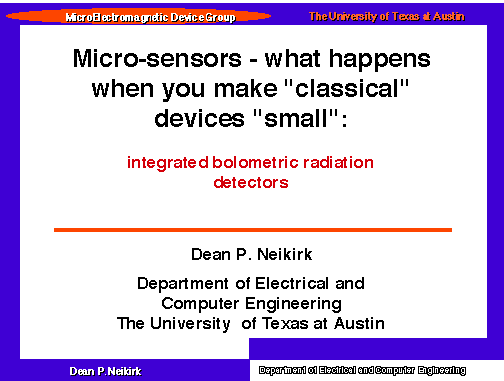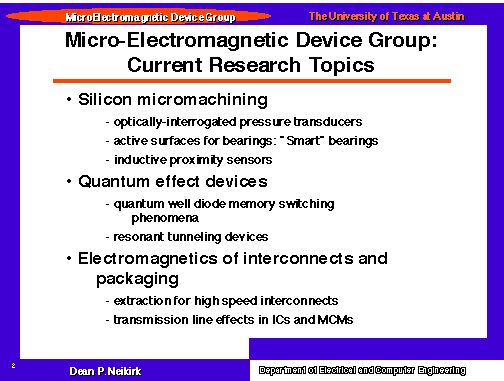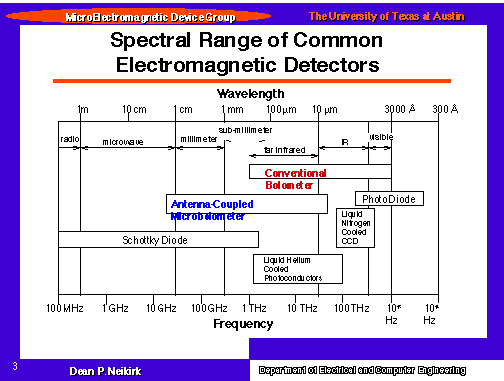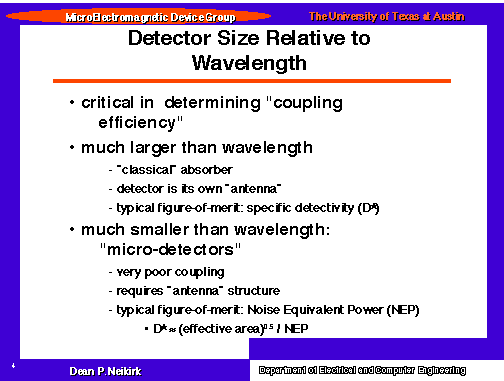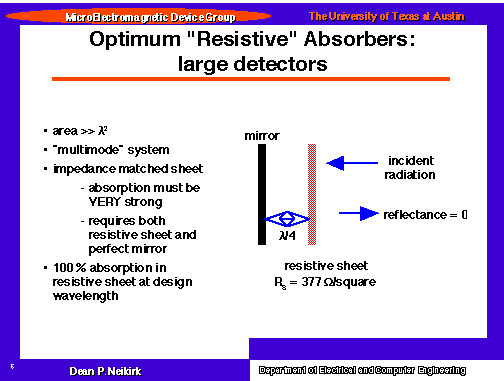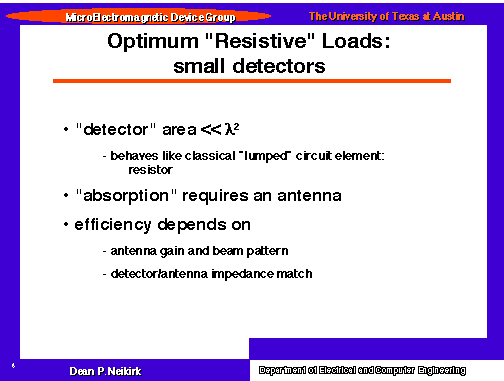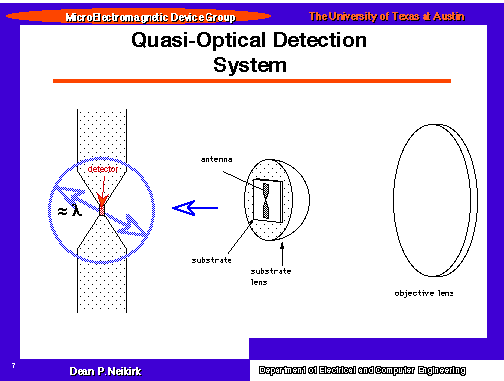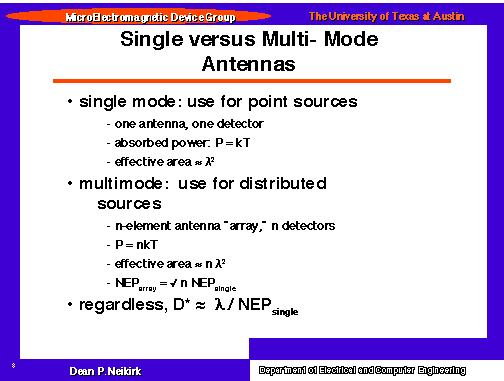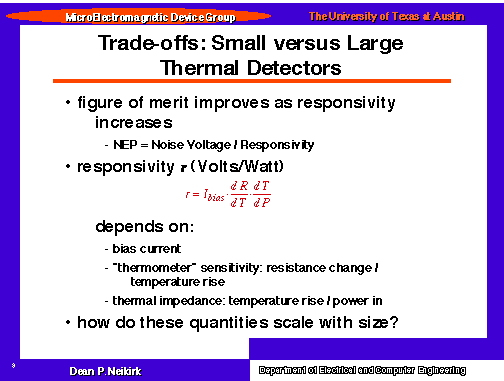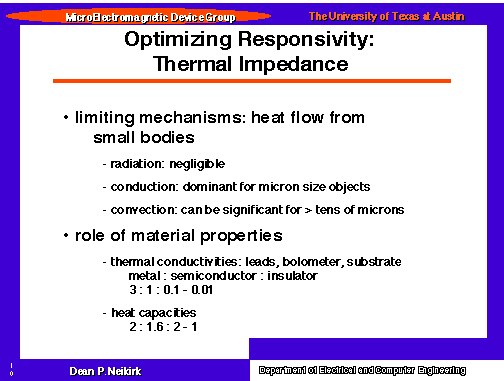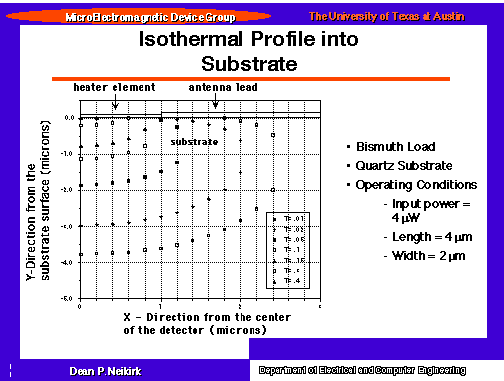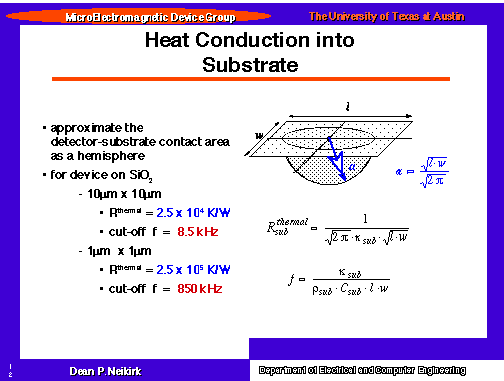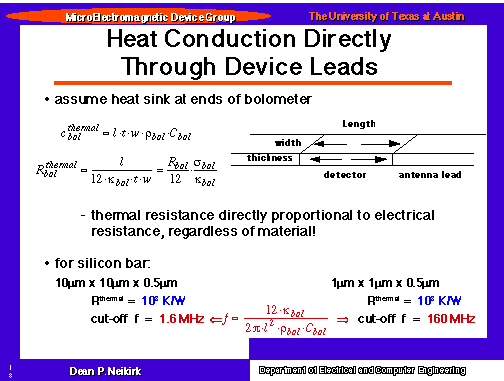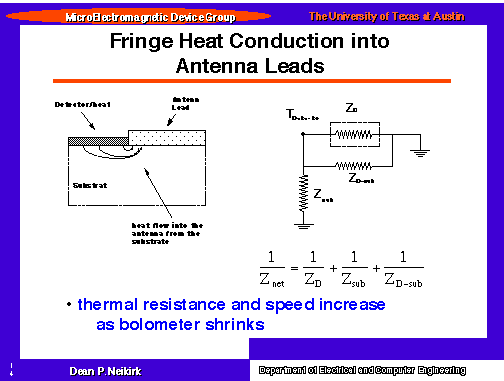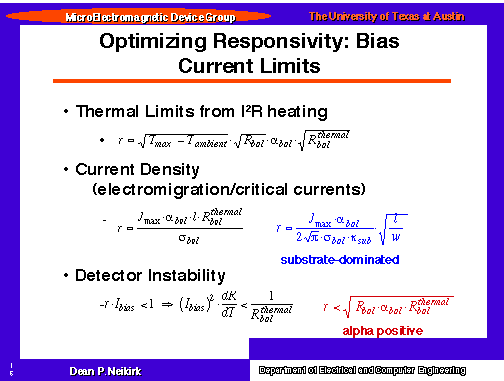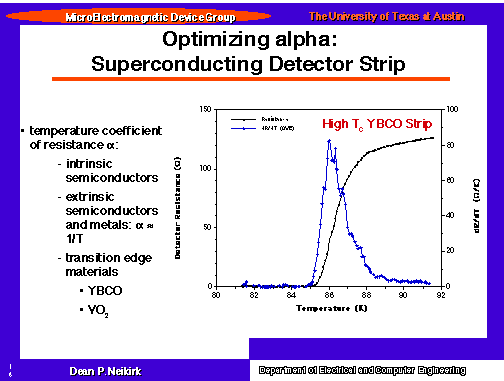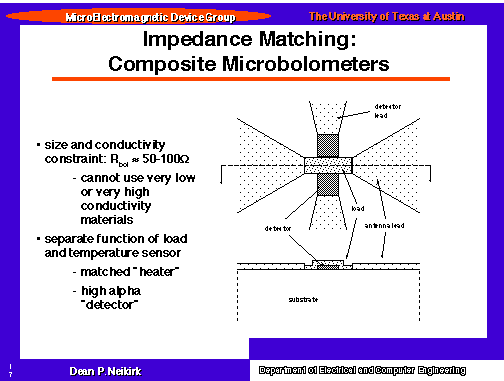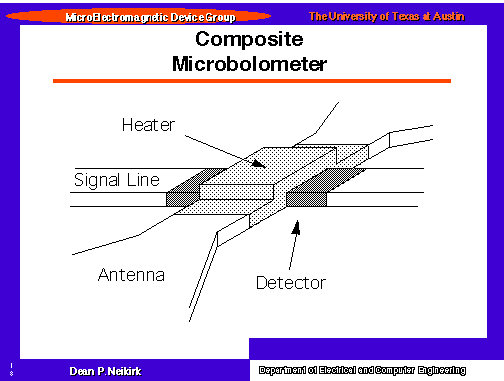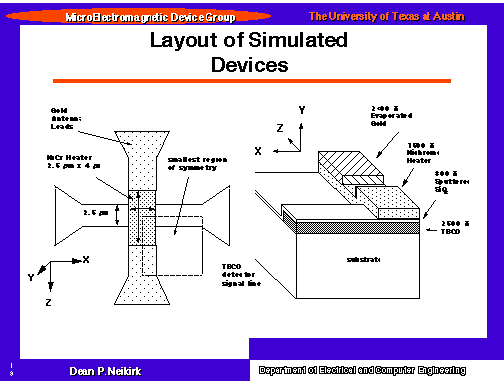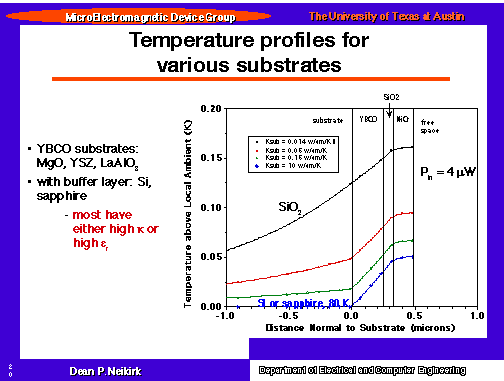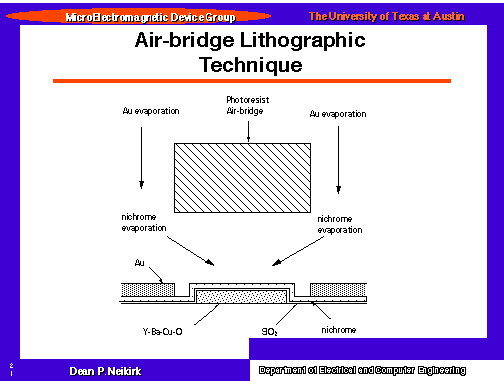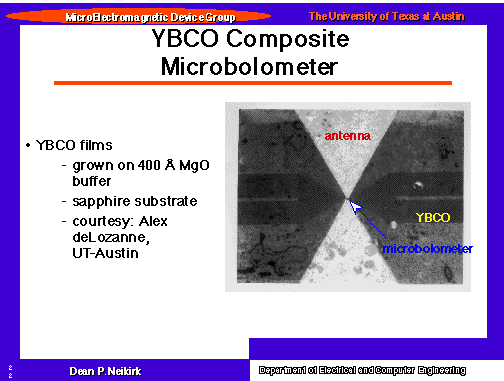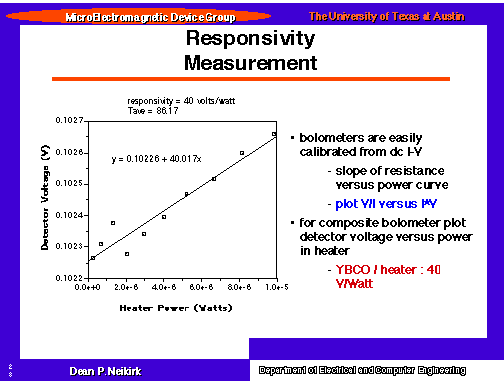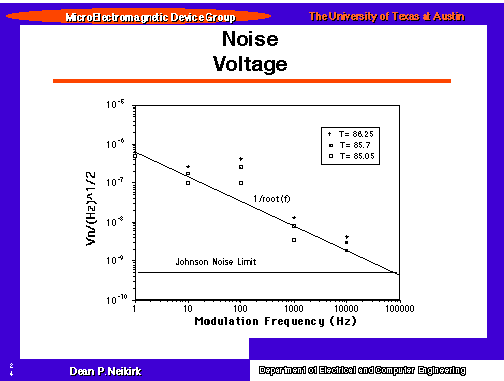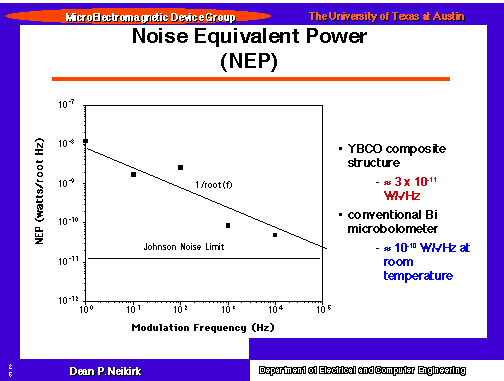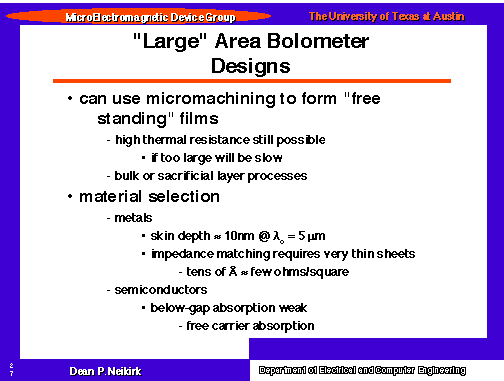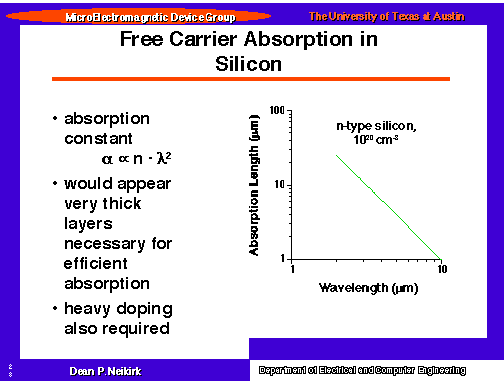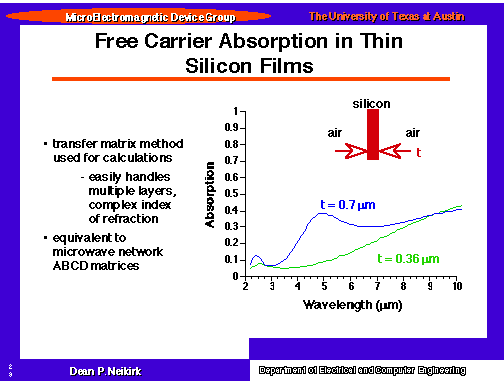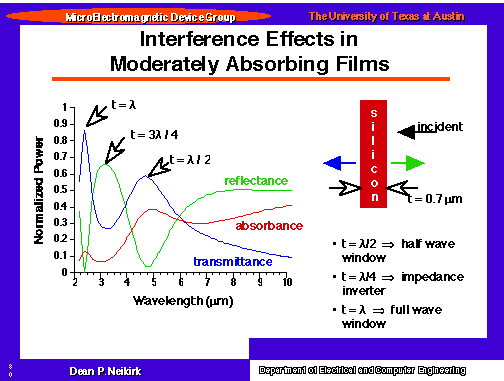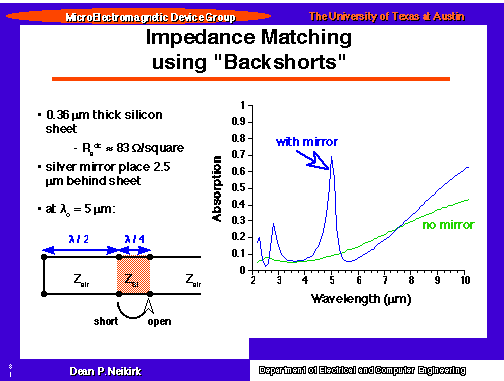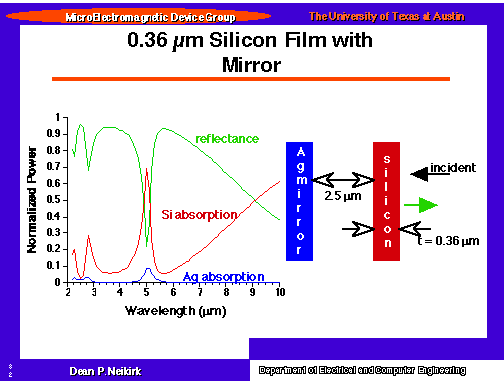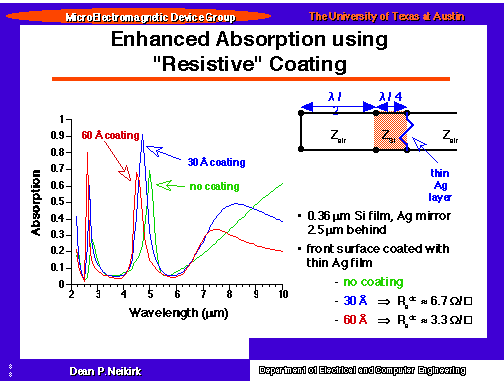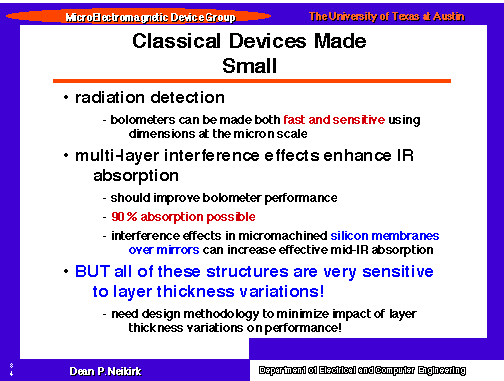For further information contact Professor Dean Neikirk at
neikirk@mail.utexas.edu
For more details on this topic also see:
[1] D. P. Neikirk and D. B. Rutledge, "Self-Heated Thermocouples for
Far-Infrared Detection," Applied Physics Letters, vol. 41, pp. 400-402,
1982.
[2] D. P. Neikirk, D. B. Rutledge, and W. Lam, "Far-Infrared
Microbolometer Detectors," International Journal of Infrared and
Millimeter Waves, vol. 5, pp. 245-277, 1984.
[3] D. P. Neikirk and D. B. Rutledge, "Air-Bridge Microbolometer for
Far-Infrared Detection," Applied Physics Letters, vol. 44, pp. 153-155,
1984. (A surface micromachined bolometer, made long before the process
was called that!)
[4] S. M. Wentworth and D. P. Neikirk, "Far Infrared Microbolometers
made with Tellurium and Bismuth," Electronics Letters, vol. 25, pp.
1558-1560, 1989.
[5] S. Wentworth, PhD dissertation, "Far Infrared Microbolometer Detectors,"
The University of Texas at Austin, 1990.
[6] S. M. Wentworth and D. P. Neikirk, "A Transition Edge Microbolometer
(TREMBOL) for Far-Infrared Detection,," SPIE Conference on Superconductivity
Applications for Infrared and Microwave Devices, Orlando, FL, 1990.
[7] S. M. Wentworth and D. P. Neikirk, "Composite Microbolometers with
Tellurium Detector Elements," IEEE Transactions on Microwave Theory
and Techniques, vol. MTT-40, pp. 196-201, 1992.
[8] J. Lewis, PhD dissertation, "Far-Infrared and Sub-Millimeter Microbolometer
Detectors," The University of Texas at Austin, 1994.
Micro-sensors - what happens when you make "classical"
devices "small":
integrated bolometric radiation detectors
Dean P. Neikirk
Department of Electrical and Computer Engineering
The University of Texas at Austin
www: http://weewave.mer.utexas.edu
